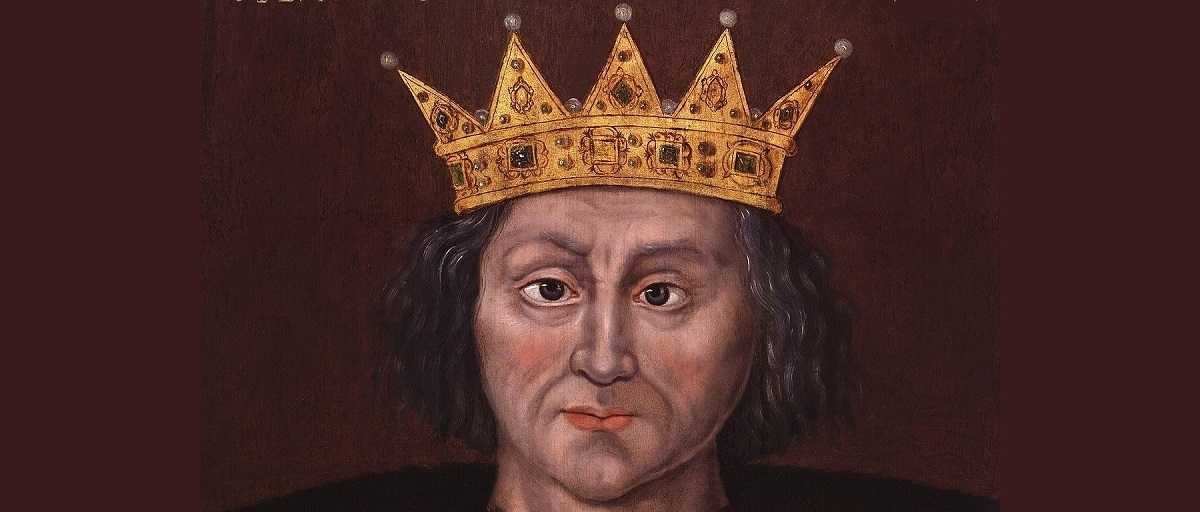Stephen, King of England
Posted on 4th January 2021
Stephen, also known as Stephen of Blois was born in Blois, France, the son of Stephen-Henry, Count of Blois and Chartres, and Adela of Normandy, daughter of William the Conqueror.
Stephens father died when he was young, and he was brought up by his mother who sent him to be raised in the court of his uncle, Henry I of England, who liking Stephen, bestowed upon him many titles and privileges.
William Adelin was Henrys son and heir, but in 1120 he died in the wreck of the White Ship travelling from Harfleur in Normandy to England; all but two of the travellers on board died.
The English succession was now uncertain, however, Henry I, named his only legitimate child still living, Empress Matilda, as his heir. This decision was unpopular with the barons who disliked the idea of a woman ruler however they, along with Stephen pledged their allegiance to her with Henry demanding his court take oaths to recognise Matilda as his successor.
After the death of her first husband Emperor Henry V, Matilda married Geoffrey, Count of Anjou. He was unpopular in England, as ruler of the Angevin Dynasty, he was a natural enemy of Norman England. Matilda and Geoffrey now believed they lacked genuine support for the English throne.
King Henry I died on 1 December 1135, now the throne would be disputed between Stephen and Matilda.
Stephen was in Boulogne when he heard of Henrys death, and he made his way across the channel to claim the throne. Matilda and Geoffrey were not so well placed, being in Anjou supporting rebel forces against the royal army.
Stephen arrived in England and with support from many leading barons he was crowned Stephen, King of England on 22 December 1135 at Westminster Abbey. His wife Matilda of Boulogne was crowned on 22 March 1136.
Reign 1135 - 1154
Stephen spent time consolidating his position and building support, including allowing extra papal influence in England for the support of the Pope, however he made many concessions which made him look weak and alienated his barons. This was not a good start to his rule.
Stephens reign was dominated by civil war. First, David, King of Scotland invaded the disputed territory of northern England in 1136, gaining many areas before coming to an agreement with Stephen. He then invaded again in 1138, but was beaten at the Battle of the Standard in 1138.
Robert of Gloucester, illegitimate son of Henry I and half-brother to Matilda, one of the most powerful barons in England attacked in 1138, then gave support for Matilda’s invasion in 1139.
In 1141, Stephen and his army besieged Lincoln Castle, but Gloucester advanced towards his position with an army that vastly outnumbered Stephens, however Stephen decided to fight, leading to his capture at the Battle of Lincoln on 2 February 1141.
Matilda now took steps to gather support and have herself crowned Queen of England, however entering London, she was met with opposition and left without being crowned.
Forces loyal to Stephen, led by his wife Matilda of Boulogne, captured Robert of Gloucester at the Rout of Winchester on 14 September 1141. Failing to convince Gloucester to change sides and give allegiance to Stephen, an exchange was agreed, and Stephen and Gloucester were released in November 1141.
Stephen now began to regain his authority. In 1142, he besieged Oxford and trapped Empress Matilda in the castle, however Oxford was a secure town, and Stephen unable to take it, set in for a long siege, happy in the knowledge that Matilda was surrounded. Matilda, unknown to Stephen had escaped from Oxford on foot, leaving Stephen looking incompetent to his court as he had failed to capture his enemy, although her forces surrendered shortly afterwards.
While the situation in England reached stalemate, Geoffrey of Anjou, Empress Matilda’s husband continued to expand his empire in France, gaining control of southern Normandy and moving into Rouen, finally being recognised as the Duke of Normandy.
Battle continued in England, but nobody could gain overall control, and Matilda left in 1148 and returned to France.
Stephen wanted to affirm the position of his son Eustace as the next King of England, having him crowned King while Stephen himself was still alive. This was the custom in France, but not usual practice in England, and the Pope banned Stephen from doing so. Stephens only other option was to have Archbishop Theobald crown his son, but he refused, was imprisoned, then later escaped and fled to France.
From 1135 - 1153 England suffered Civil war known as ‘The Anarchy’ and now many wanted peace.
Henry, Empress Matilda’s son invaded in 1153, but neither side wanted to fight, and peace was finally agreed following the death of Stephens son Eustace on 17 August 1153.
The ‘Treaty of Wallingford’ was signed in November 1153. Stephens son William renounced the throne of England, and it was agreed that Stephen would rule until his death, the crown then going to Henry FitzEmpress, son of Empress Matilda and Geoffrey of Anjou, later to become Henry II.
In 1154 Stephen travelled to Dover where he died on 25 October 1154. He is buried in Faversham Abbey with his wife Matilda and son Eustace.
Stephens reign was not a successful one. A charismatic man, he lacked the strength of character to rule his kingdom, making too many concessions during his reign. He is often forgotten when discussing the monarchy of the middle ages.
Tagged as: Junior Middle Ages
Share this post:





